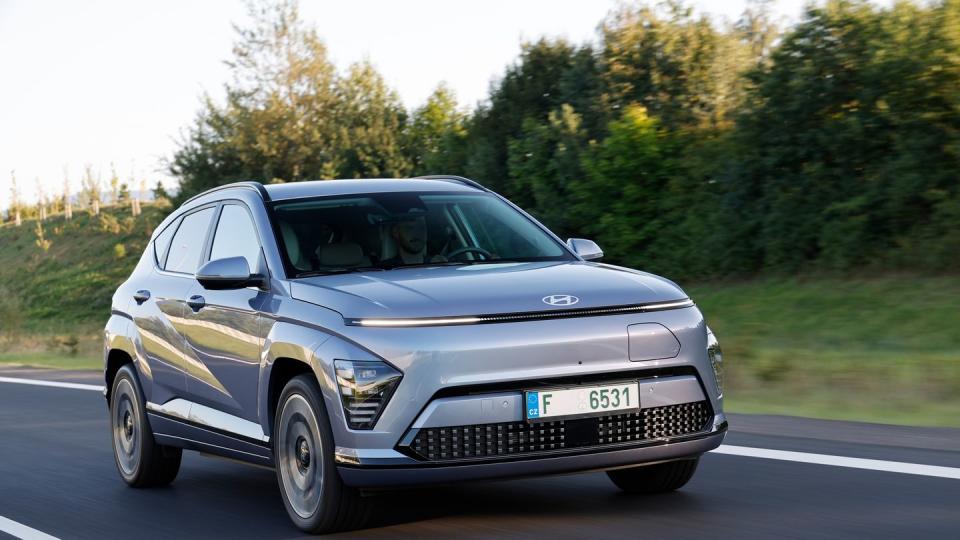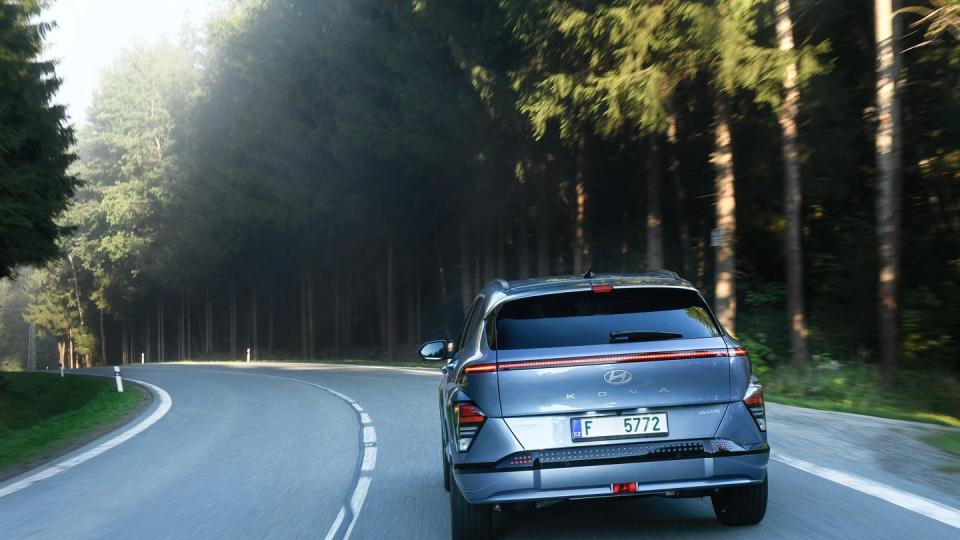2024 Hyundai Kona Electric Still Pleases

The forced move to electrification has shaken up the decades-old hierarchy of brands in the automotive business. Many leaders were caught out by the trend and faced internal resistance that made them slow to adapt. It was and is, however, a golden opportunity for new brands and for established players looking to get ahead. In the latter camp is the Hyundai Motor Group, which has turned out a plethora of stellar EVs, including the first-generation Kona Electric. Now Hyundai has comprehensively redesigned its entry-level EV. Although the new Kona Electric is not yet on sale in the U.S., we had a chance to spend a day with it near the Nošovice plant in the Czech Republic, where models destined for European markets will be built.
Hyundai makes much ado about the fact that the new Kona was designed as an "electric first." That may well be, but we find it surprising that you can so easily stuff a conventional powertrain into a vehicle designed to be an EV. In fact, a glance at the new Kona—and the Kona Electric—reveals that the car has not deviated far from its predecessor. Like the previous model, it's stylish in a playful way. The convoluted lines of the new Kona won't please Bauhaus-worshipping purists, but the horizontal light bars and the "parametric pixels" that adorn the car set it apart pleasantly from many a dull competitor. Beyond that, the Kona Electric remains a compact, easy-to-park, yet surprisingly spacious crossover.

It has become slightly bigger in its second generation—5.7 inches longer and with a 2.3-inch greater wheelbase—which can be a negative in European traffic. But it doesn't really matter in the U.S., where the new Kona is still on the smaller end of the spectrum. The growth was a specific request of Asian markets, where the Kona often serves as a family's only vehicle.
This time there are two battery options, a standard battery (in the SE) with a capacity of 48.6 kWh and an extended-range battery of 64.8 kWh (in the SEL and Limited). With the larger battery, the Kona Electric is estimated to achieve 260 miles of range (EPA figures aren't out yet), while the smaller battery is said to be good for just under 200 miles. Whereas the Ioniq 5 and Ioniq 6 models feature an 800-volt architecture, the Kona uses a 400-volt system. Hyundai says that a 100-kW connection can take either battery from 10 to 80 percent in 43 minutes. The onboard charger has been upgraded from a 7.2-kW unit previously to a 10.8-kW one, cutting by a third the time it takes to go from 10 to 100 percent charge on an appropriately powerful 240-volt (Level 2) source.
The smaller battery limits output of the same electric motor to 133 hp but delivers an identical 188 pound-feet of torque to the front wheels. Europe gets slightly higher power ratings for both setups. We drove the top-of-the-line model that's rated at 215 horsepower—for the U.S., SEL and Limited models get 201 horses. The power comes on with a satisfying rush, but as you'd expect, there is no head-snapping acceleration as in the high-powered Ioniq models.


 Yahoo Autos
Yahoo Autos 